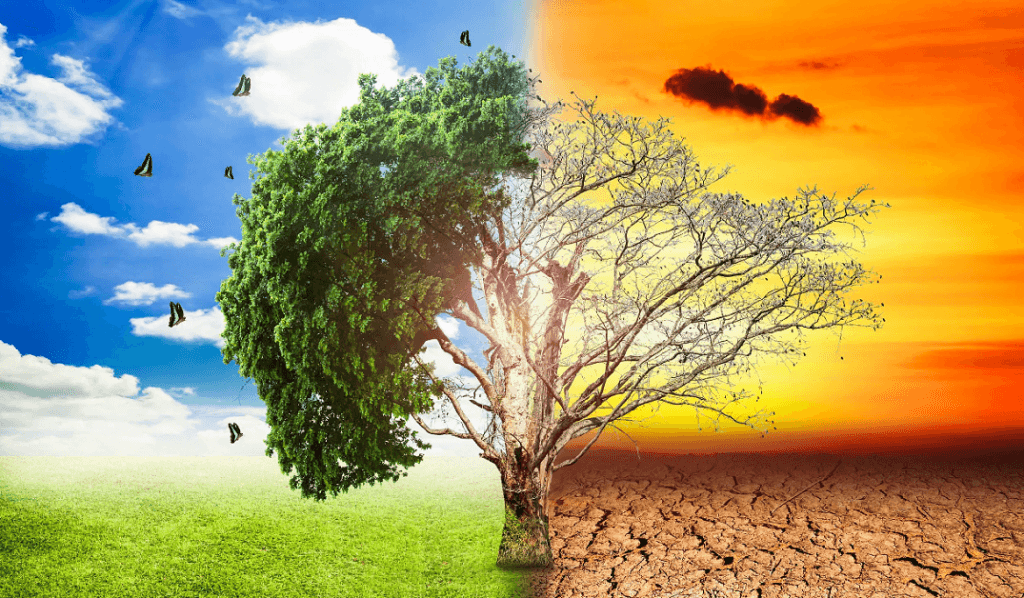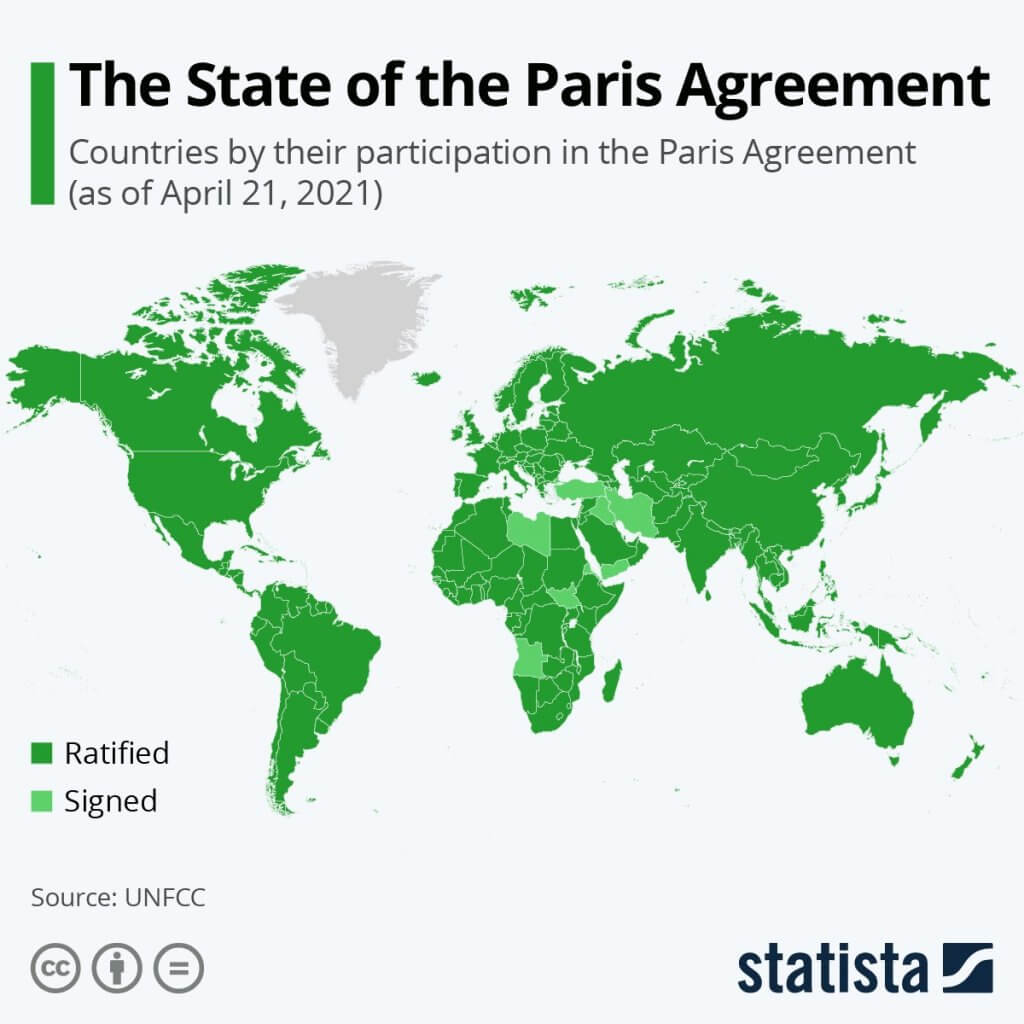Quick Guide to Climate Change

Courtesy eyesonsuriname/United Nations
eyesonsuriname
Amsterdam, 14 march 2023 — Climate change refers to long-term shifts in temperatures and weather patterns. These shifts may be natural, such as through variations in the solar cycle.
But since the 1800s, human activities have been the main driver of climate change, primarily due to burning fossil fuels like coal, oil and gas.
Burning fossil fuels generates greenhouse gas emissions that act like a blanket wrapped around the Earth, trapping the sun’s heat and raising temperatures.
Examples of greenhouse gas emissions that are causing climate change include carbon dioxide and methane.
These come from using gasoline for driving a car or coal for heating a building, for example. Clearing land and forests can also release carbon dioxide.
Landfills for garbage are a major source of methane emissions.
Energy, industry, transport, buildings, agriculture and land use are among the main emitters.
World temperatures are rising because of human activity, and climate change is now threatening every aspect of human life.
If left unchecked, humans and nature will experience catastrophic warming, with worsening droughts, further sea level rise and mass extinctions of species.
We face a major challenge, but there are potential solutions.
- Climate change: ‘it’s now or never’ to avoid catastrophe, says new report
- Why commercial space travel can make air pollution worse
Climate is the set of average temperature and environmental conditions in a place over many years. Climate change is a change in these average conditions.
- What is climate change?
The rapid climate change we are seeing now is caused by human use of oil, gas and coal for homes, factories and transportation.
When these fossil fuels burn, they release greenhouse gases—mainly carbon dioxide (CO2). These gases trap the Sun’s heat and cause the planet’s temperature to rise.
The planet is now about 1.2°C hotter than it was in the 19th century — and the amount of CO2 in the atmosphere has increased by 50%.
The pace of temperature rise needs to slow if we are to avoid the worst consequences of climate change, scientists say. They claim that global warming needs to be kept at 1.5°C by the year 2100.
- Why scientists mobilize against the idea supported by Bill Gates to curb global warming
- What is the last Arctic ice patch, key to the future of life on Earth
However, unless further action is taken, the planet could still warm by more than 2°C by the end of this century.
If nothing is done, scientists believe that global warming could exceed 4ºC, leading to devastating heat waves, millions losing their homes due to rising sea levels and irreversible loss of plant and animal species.
What is the impact of climate change?
Extreme weather events are already at their most intense, threatening lives and livelihoods.
With additional warming, some regions could become uninhabitable as farmland turns into deserts. In other regions, the opposite is happening, with extreme rainfall causing historic flooding – as seen recently in China, Germany, Belgium and the Netherlands.
People in the poorest countries will suffer the most as they don’t have the money to adapt to climate change. Many cities in developing countries already have to endure very hot climates and it will only get worse.
What are governments doing?
Countries agree that climate change can only be tackled by working together, and in a landmark agreement in Paris in 2015, they pledged to try to keep global warming to 1.5°C.
The UK will host a summit for world leaders, called COP26, in November, where countries will set out their carbon reduction plans for 2030.
Many countries have committed to achieving carbon neutrality by 2050. This means reducing greenhouse gas emissions as much as possible and balancing the remaining emissions by absorbing an equivalent amount from the atmosphere, through carbon capture technologies, for example.
Most experts believe this is possible, but it will require governments, companies and individuals to make big changes.

What can individuals do?
Big changes need to come from governments and businesses, but scientists say a few small changes in everyday life can limit our impact on the climate:
• Take fewer flights
• Do not use cars or opt for an electric car
• Buy energy efficient products like washing machines when they need replacement
• Switch from a gas heating system to an electric heat pump
• Use material that insulates your home from cold and heat, thereby avoiding using heating and air conditioning. Our oceans and their habitats are also under threat. The Great Barrier Reef in Australia, for example, has already lost half of its corals since 1995 due to warmer seas caused by climate change.
Wildfires are becoming more frequent as climate change increases the incidence of hot and dry weather.
And as frozen ground melts in places like Siberia, greenhouse gases trapped for centuries will be released into the atmosphere, exacerbating climate change.
- Scientists unravel mystery of ‘alien-like’ life deep in the Arctic
- Who will pay for the damage caused by climate change?
In a warmer world, animals will have a harder time finding the food and water they need to live. For example, polar bears may die as the ice they depend on melts, and elephants will struggle to find the 150-300 liters of water they need each day.
Scientists believe that at least 550 species could disappear this century if measures are not adopted.

How will different parts of the world be affected?
Climate change has different effects in different areas of the world. Some places will heat up more than others, some will receive more rainfall, and some will experience more drought.
If the temperature rise cannot be kept within 1.5°C:
• UK and Europe will be vulnerable to flooding caused by extreme rainfall
• Middle Eastern countries will experience extreme heatwaves and farmland could turn to desert
• Island nations in the Pacific region may disappear with rising seas
• Many African nations may experience droughts and food shortages
• Drought conditions are likely in the western US, while other areas will see more intense storms
• Australia is likely to experience extremes of heat and drought.
eyesonsuriname









